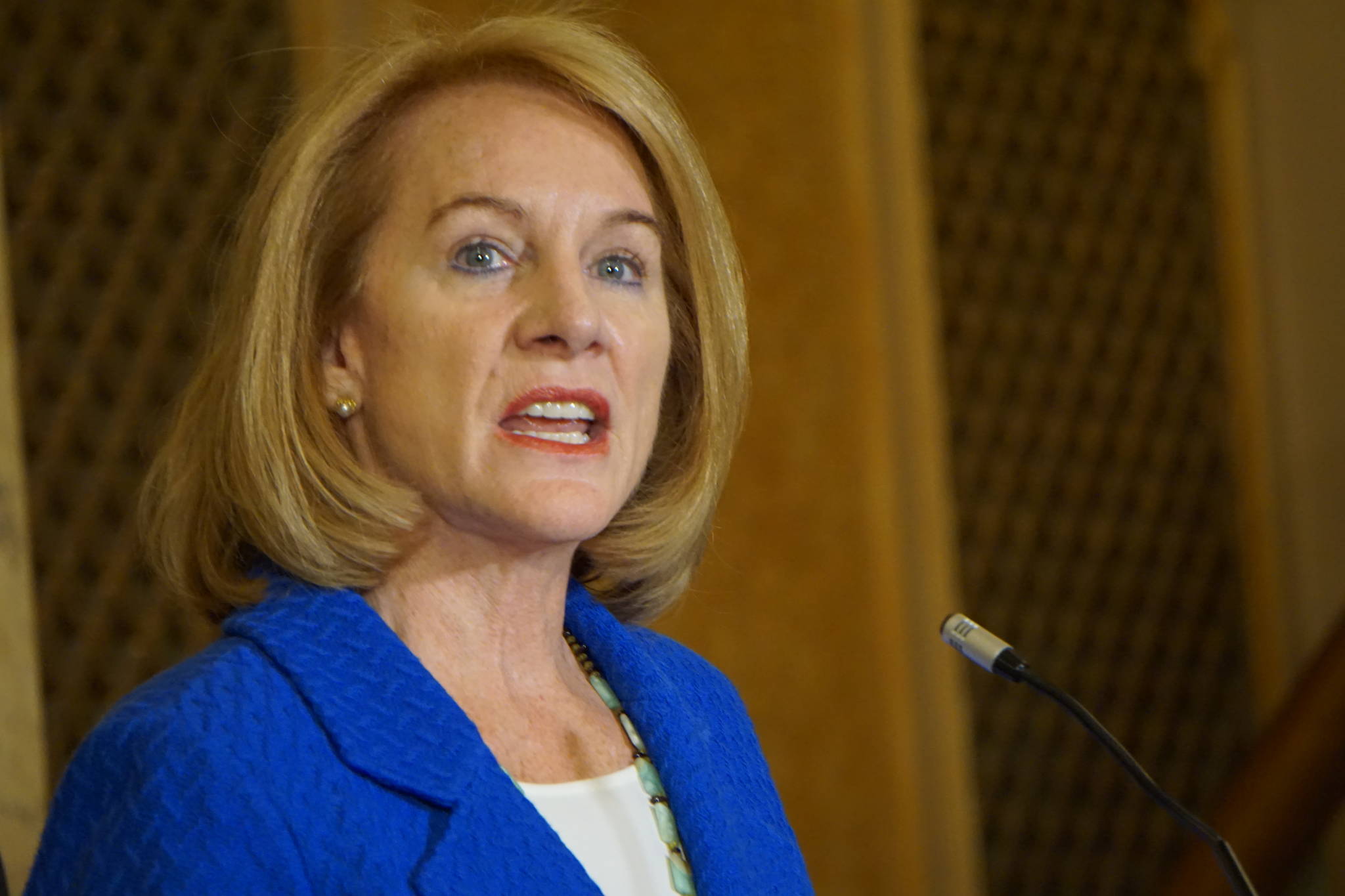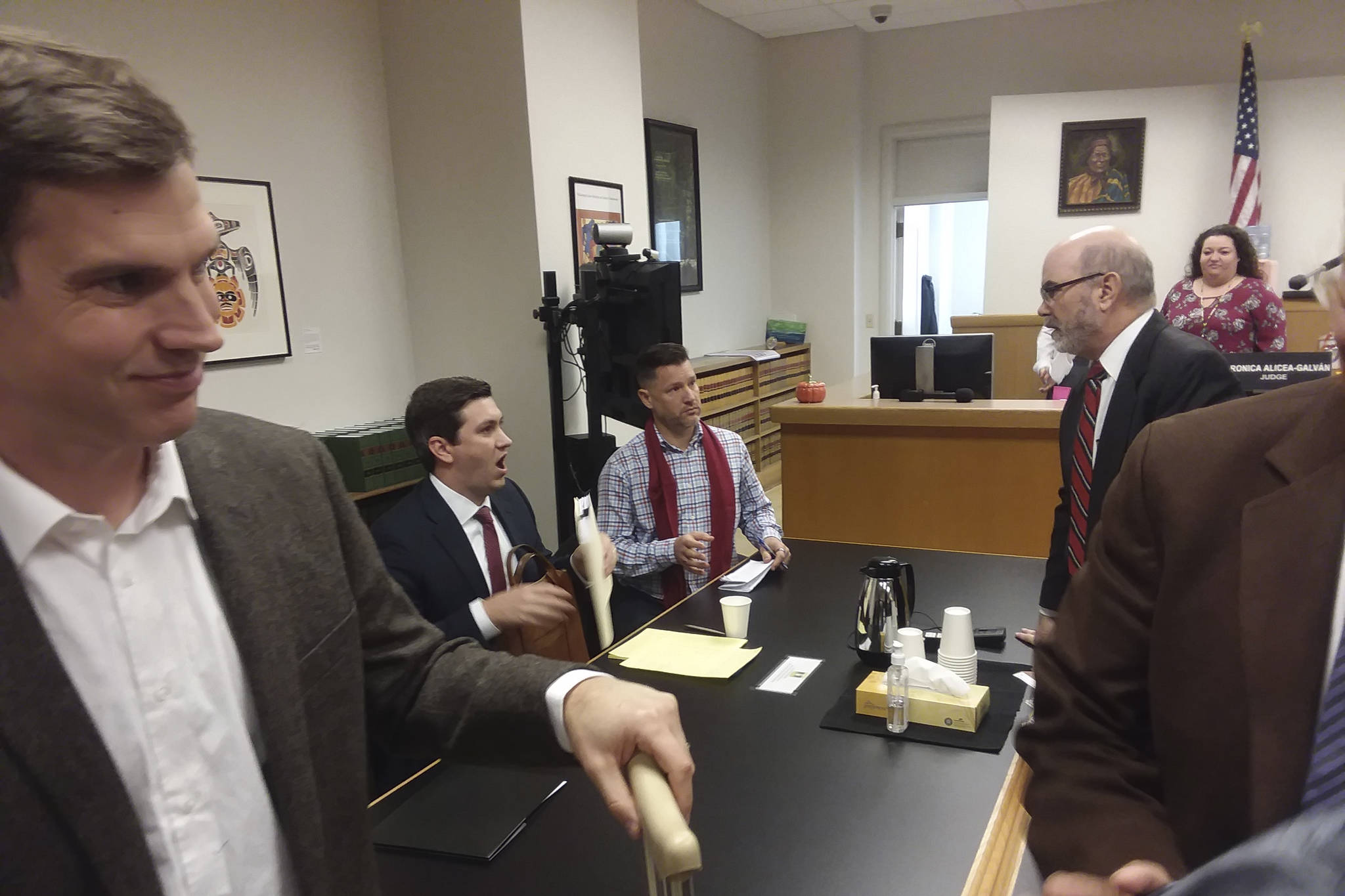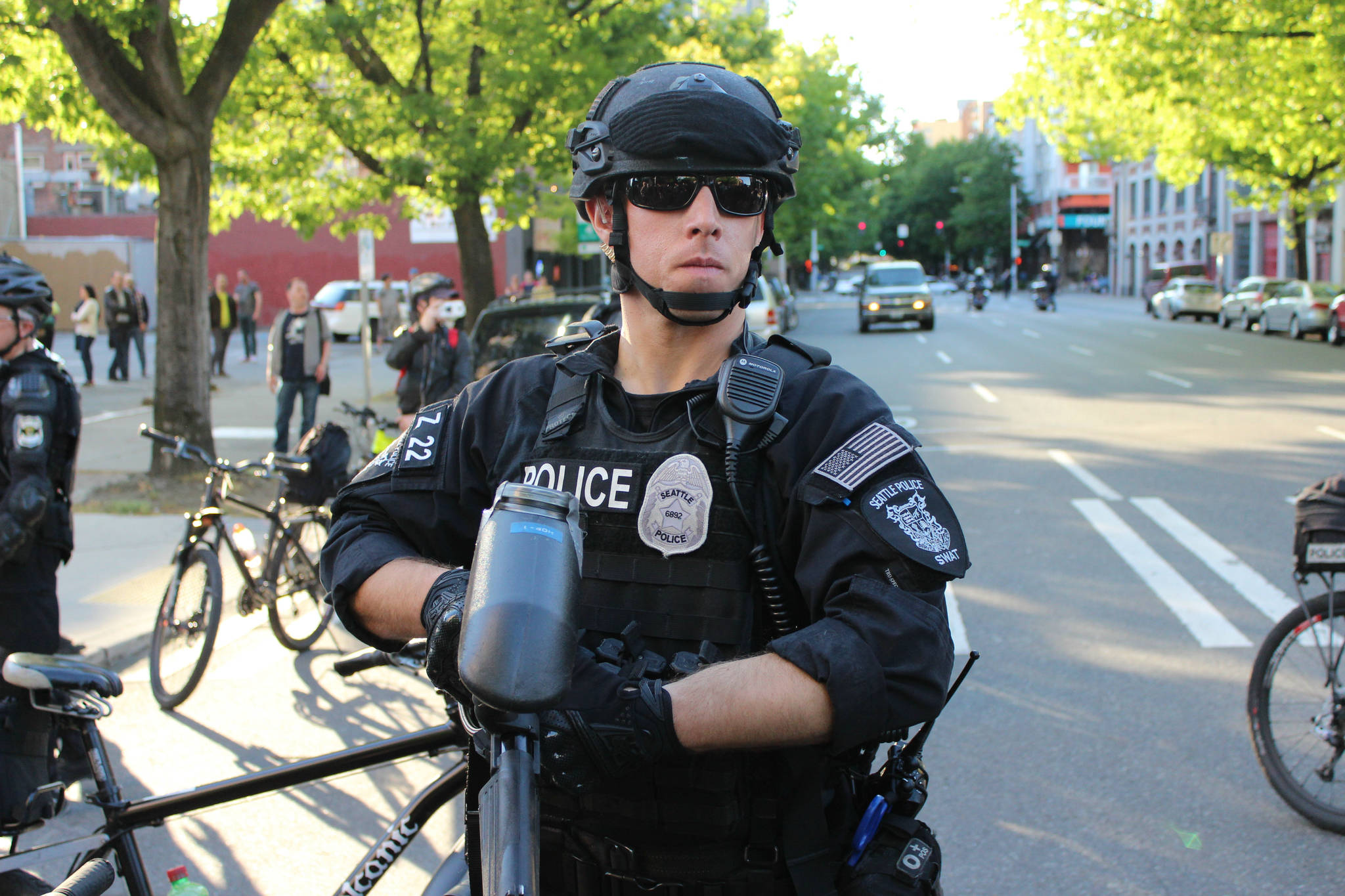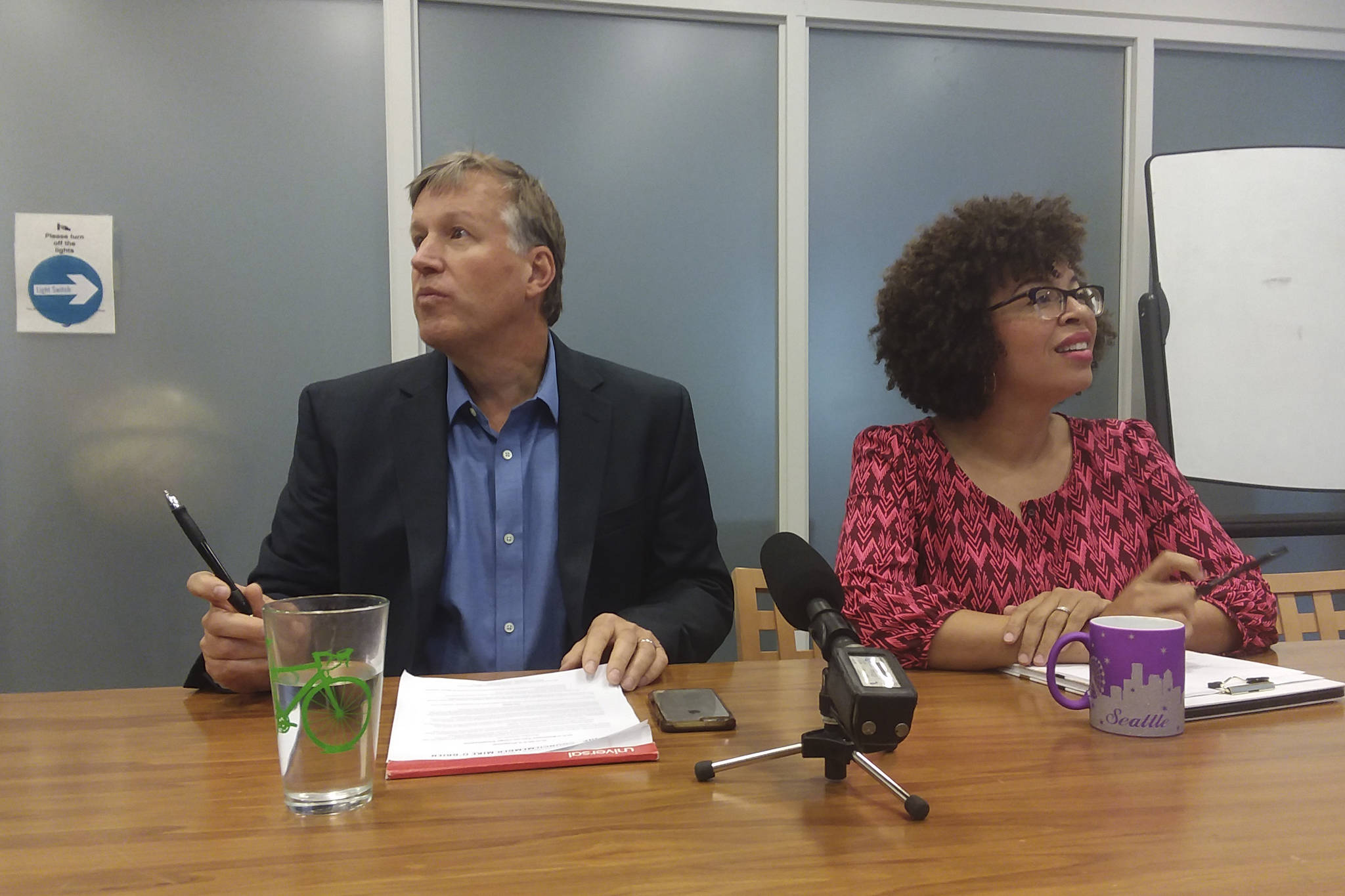In a sometimes-tense meeting in City Hall yesterday, Mayor Murray’s top staffers made their case for a new $160 million police precinct in North Seattle.
It was a tough sell. Commenter after commenter at the beginning of M. Lorena González’ Gender Equity, Safe Communities, and New Americans (GESCNA) committee called the plan a “ridiculous” misuse of scarce funding, many pointing out that the city is currently in a formal state of emergency for homelessness. A handful of commenters spoke in support of the new precinct. In committee, councilmembers González and Mike O’Brien criticized the executive branch for nearly doubling the price tag from an initial estimate of $88.5 million and questioned whether building the most expensive police station in the country, as the Seattle Times has called it, was the best use for public dollars.
Presenting the project were SPD chief Kathleen O’Toole and mayoral budget tzar Ben Noble, plus staff. Several uniformed SPD officers stood outside the meeting, watching through the council chamber’s glass walls. Noble told the council that the land for the new precinct at Aurora Ave. N. and N. 130th St. was acquired two years ago, and the building will be paid for with money from city bonds, loans, and real estate tax revenue. Noble called the current facility, constructed in 1984 and currently well over capacity, “an essential public facility that has been neglected.”
The initial cost estimate of $88.5 million, Noble said, was basically pulled out of thin air as a placeholder before executive departments could make an informed guess. Two thirds of the new estimated cost is construction.
Chief O’Toole defended the cost of the facility on three grounds. First, that an expensively earthquake-proof building can function as an emergency center after the Big One. Second, that “this will be the community’s police station, and will help us build bridges…It’s their space,” complete with a skateboard-friendly sidewalk and public meeting rooms. And third, that the on-site shooting range will facilitate police training, which she said has increased five-fold as a result of the city’s consent decree with the Department of Justice over brutal and possibly racist policing.
“I understand there have been concerns…[that we] are building a fortress,” she told council. “We’re not building a fortress to divide the police from the community.”
She was correct that there were concerns. “To a taxpaying and voting citizen like myself, it feels like the police are anticipating and even preparing for a war against them” judging by the design of the new precinct, commenter Patricia Fong told the committee. Sheley Seacrest of the NAACP urged councilmembers to stop “militarizing the police,” referring to the transformation of US police into paramilitary forces over the past half-century. SU law professor Dean Spade told the committee, “I think you all know, I think everybody knows that the policing and prison system in the United States is an acknowledged failure. There’s no reason to spend a single additional penny on policing or imprisonment in our region.” Steve Lee of the No New Jim Crow Campaign said, “We’ve declared a state of emergency around homelessness. Have we declared a state of emergency around violence against police, so that they need a bunker?”
A few commenters, all of them white, did support the project. Maggie Sweeney, who identified herself as a third generation Seattleite and Ravenna resident, said, “We have 1,300 sworn men and women of the Seattle Police Department who are in need of our support,” she said. “They are in need of us saying ‘Yes, this building does need to be here, it does need to be built.’”
During the meeting, González “expressed [her] frustration” with Noble over the 45 percent increase in the precinct’s price tag. “It’s unacceptable that we are put in a position where…we’re underestimating by almost 50 percent. I don’t think that’s responsible or transparent to the public.”
“Couldn’t agree more,” Noble replied.
O’Brien, on the other hand, peppered O’Toole and Noble with questions about why that cost is purportedly necessary, suggesting that a smaller, less-expensive precinct could still fulfill the department’s needs if not its fondest wishes. “Since we already have a [north Seattle] police precinct—granted, an old one that’s too small and probably has some drainage issues…would it maybe make sense to do a little waterproofing in [the old precinct]” instead of demolishing it?”
Then he went on the offensive in response to the argument that the new station needs ample parking for police officers who can’t afford to live in the city. “This is an expensive city for sure,” O’Brien said, “but police officers in Seattle are well paid, so much better paid than so many other folks that are struggling to live in this city.” O’Brien noted the unusual presence of uniformed SPD officers assembled right outside, noting that city hall’s own private guards normally handle security. “I’d love to understand what it is that triggers a very visible uniformed police presence in City Hall,” he said. “There’s a subtle narrative…that when communities of color turn out to talk about police presence”—as in that very meeting’s public comment period—“we get police presence.”
González said that she hadn’t requested the SPD officers.
Nationally, on-duty police deaths have been falling since 1974, according to journalist Radley Balko, and HuffPo reports that the FBI says last year was one of the safest years for US police ever with 41 police fatalities. According to the SPD’s website, the last time an officer was killed in the line of duty here was 2009. In the past thirty years, four SPD officers have been killed by assailants. By comparison, at least 59 homeless people died last year according to the Homeless Remembrance Project. The most common causes of death were pneumonia, drug overdoses, and homicide. Two people were burned to death.







